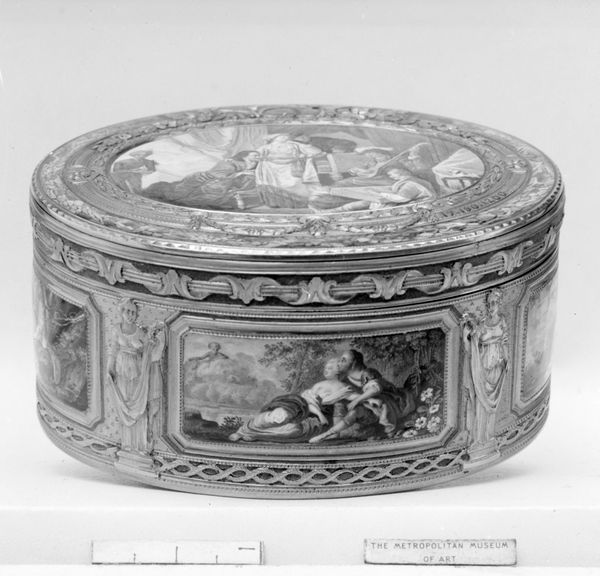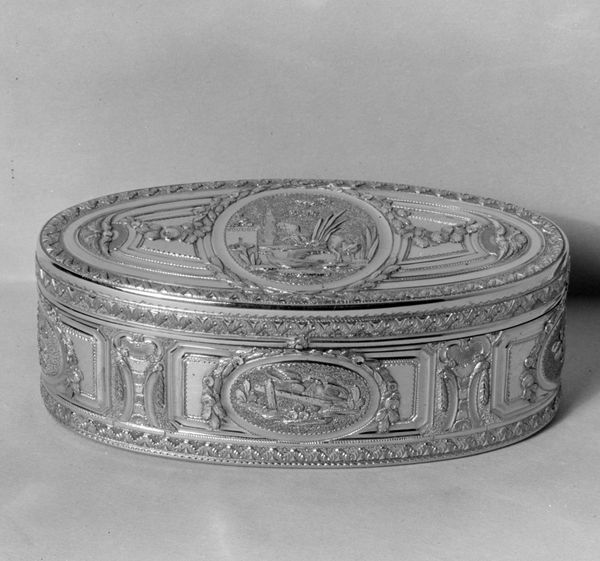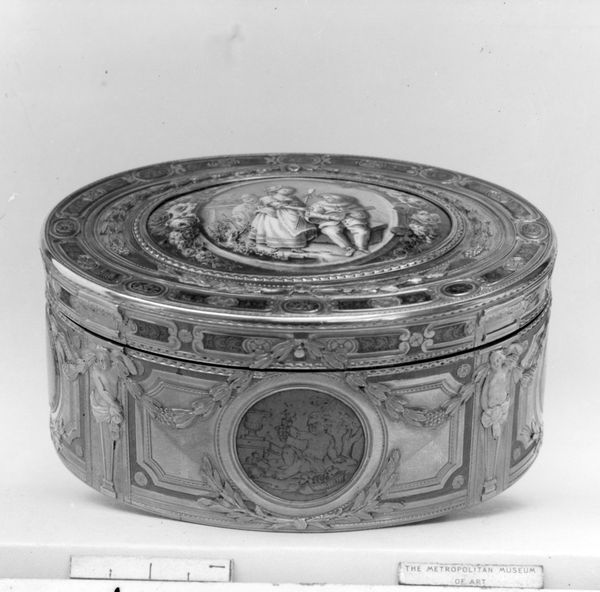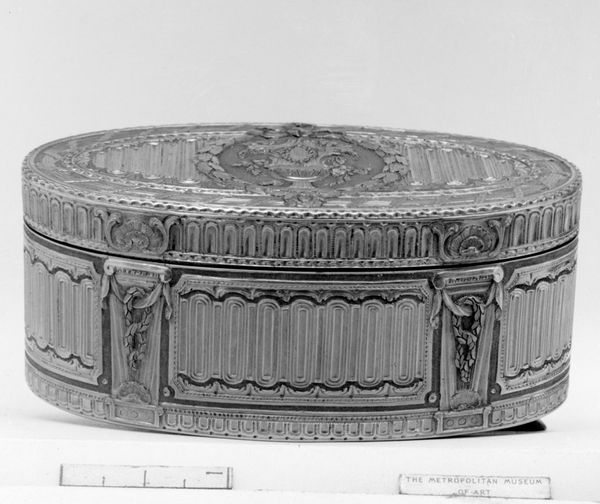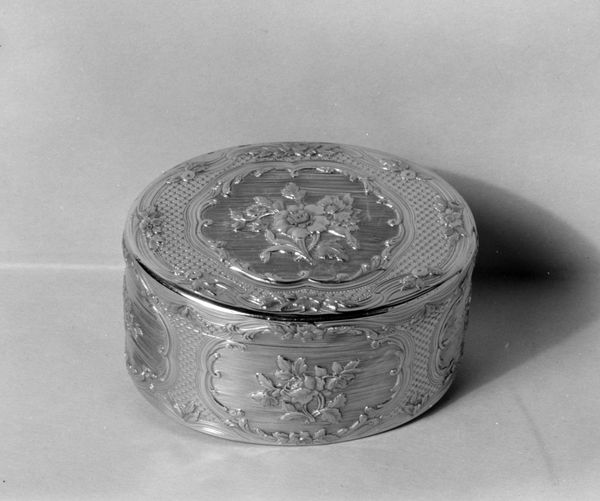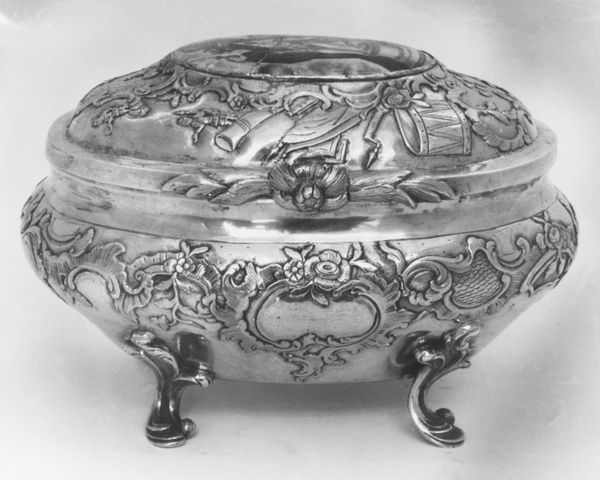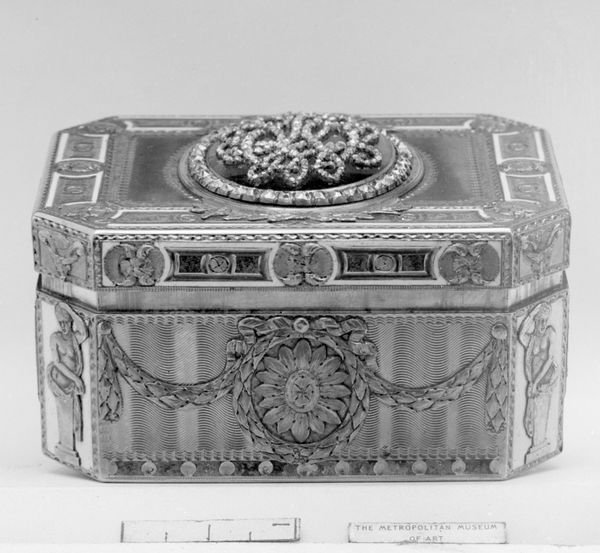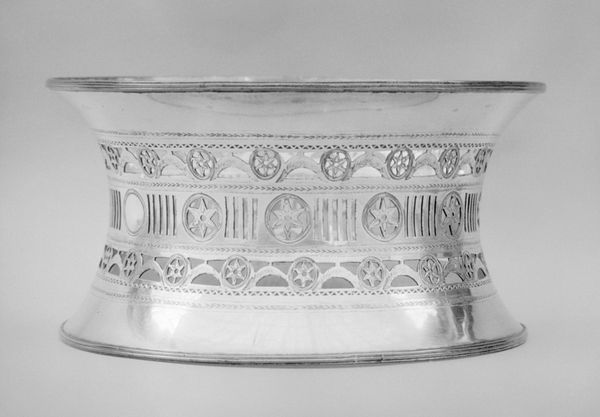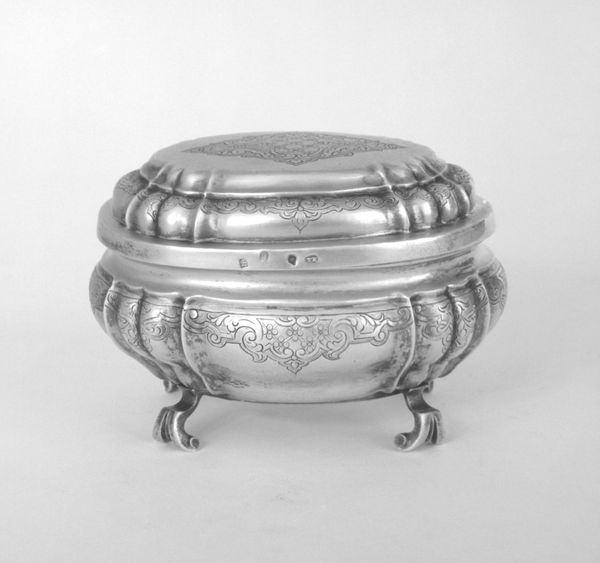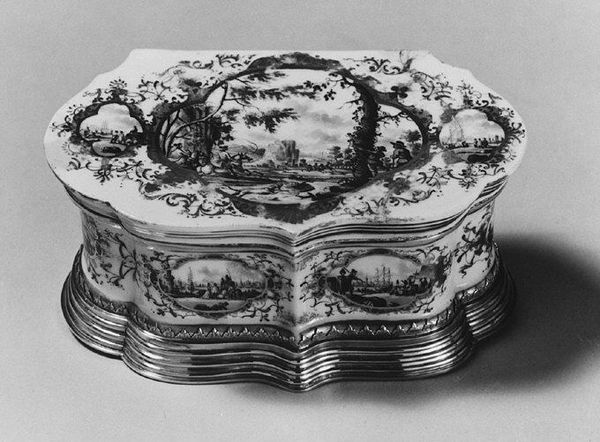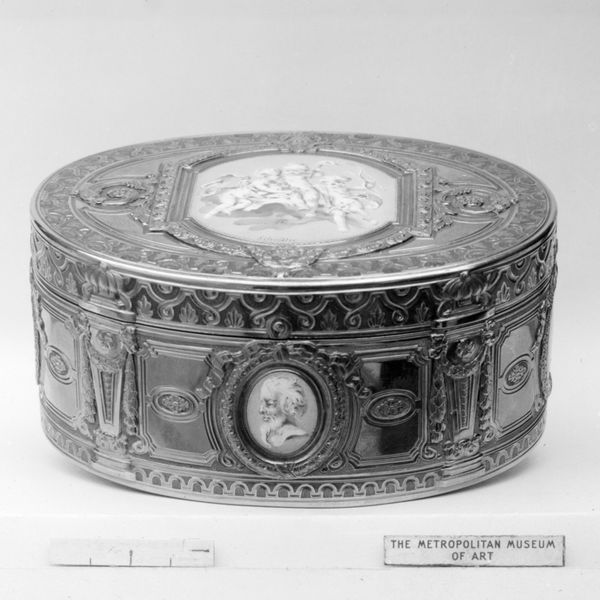
Dimensions: 1 1/2 x 2 3/4 x 2 1/8 in. (3.8 x 7 x 5.4cm)
Copyright: Public Domain
This snuffbox was made in France by Robert Joseph Auguste, sometime in the late 18th century. It’s made of gold and intricately decorated with relief carvings. In the 1700s, snuff, or powdered tobacco, was the drug of choice among European elites, both men and women. Snuffboxes, like this one, were signs of wealth, taste, and worldliness. They speak to the rituals of the upper classes, but also to Europe’s colonial project, and the exploitation of land and labor required to produce luxury goods like tobacco and ornate receptacles such as this box. Consider the scenes depicted on the box. We see idealized figures, cherubic children, and pastoral landscapes. Do these images evoke a sense of pleasure and refinement, or do they mask the realities of power and extraction on which such finery depends? How might an object like this shape our understanding of history, identity, and the relationship between aesthetics and ethics?
Comments
No comments
Be the first to comment and join the conversation on the ultimate creative platform.
